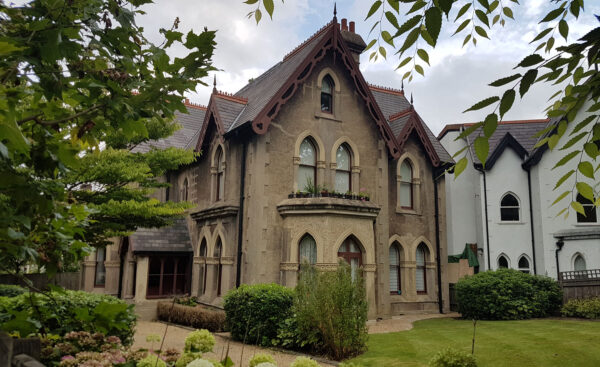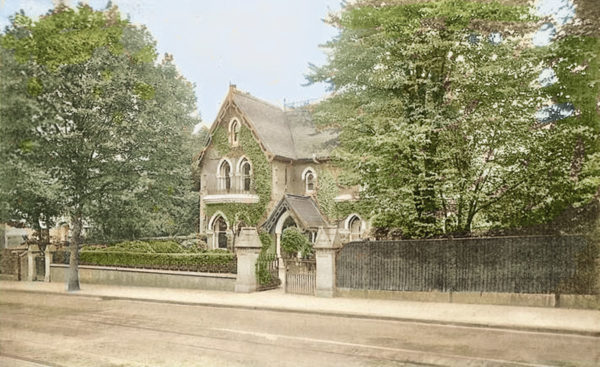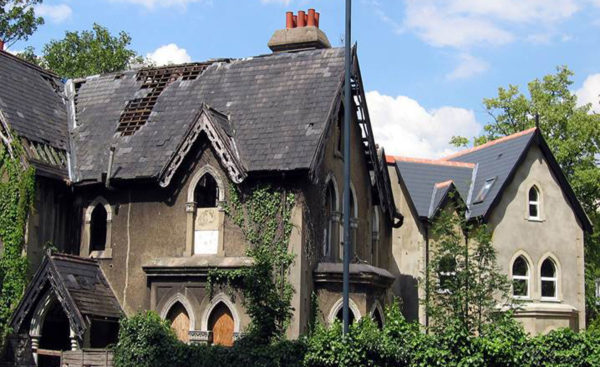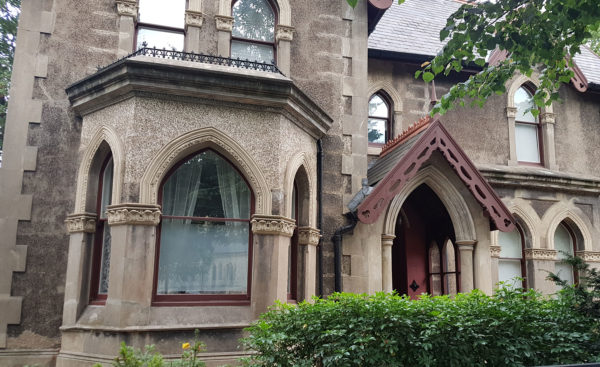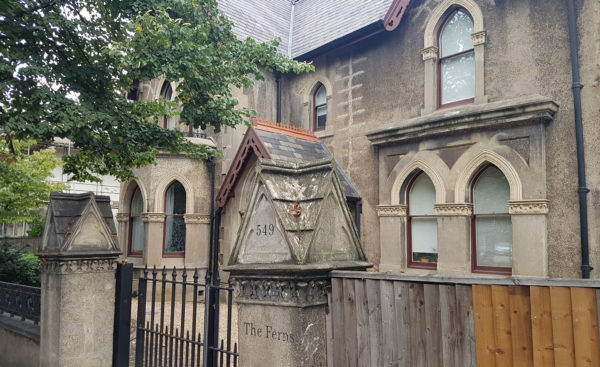Opposite a gothic looking church is a gothic looking house — made from concrete. Yes, this is the “concrete house”, constructed in 1873 by Charles Drake, possibly as a family home, possibly for the church as a Vicarage, but the key thing is — it looks gothic but is made from concrete.
Charles Drake had invented a method of constructing buildings from concrete using his patented shuttering method using iron rather than wood for forming the building. The use of iron plates, which were glazed on one side allowed for the casting of tall concrete walls in a method that’s very similar to slip form concrete construction today.
In that, his use of plain iron was both ahead of his time, but also totally unaware (obviously) that wood shuttering of concrete would make a triumphant return in the 1950s and 60s thanks to its ability to impart a pattern onto the concrete.
Drake won a few commissions for his new invention, but not many, and few survive — including a modest gothic house in Forest Hill.
It was designed by Charles Barry Junior (son of Sir Charles of Houses of Parliament fame), who was also working on the church on the other side of the road at the time. It seems that he chose the gothic style for the house in part to complement the church, but mainly to show that the new method of building with concrete could deliver homes that looked fairly conventional — as gothic was at the time.
Today we look at Gothic as the outlier of design, but at the time, it was a good Christian design for an Imperial country.
The design was clever though, with clean concrete to form the windows — as if made from stone, and the “pebbledash” effect around the walls mimicking flint and rubble walls of the deep past. It’s also arguably the first true brutalist building in the country, as while Brutalism is associated with a particular architectural style, the term itself comes from Béton brut — raw concrete, and this house is entirely made from raw exposed unapologetic concrete.
The design of this concrete house is both very conventional for the time, and just about sufficiently different to make a passerby pause a moment and wonder what it’s actually been made from.
Drake’s invention was not a success though, and he was forced to sell the home just three years after it was completed. It passed through various owners, was damaged by bombs in WW2, was nearly turned into a petrol station in 1957, then nearly demolished in 1959 for flats, turned into a nursery in the 1970s and again nearly demolished in 1989 for a nursing home.
In 1999 the owner secured permission to keep the then derelict building, but turn it into flats, and add a new similar building to the rear of the site.
The history is a bit muddled, but it seems that the new building was constructed, but the old concrete house wasn’t restored and left to decay — probably deliberately, as the owner, Birballa Chandra may have been trying to get the building deemed unsafe. Attempts by the owner to demolish the old building were repeatedly rejected until eventually in 2009 Southwark Council issued a compulsory purchase order on the building.
The council handed it over to Heritage of London Trust to restore. A number of heritage grants were provided to help save the building, such as a sum from the Architectural Heritage Fund to survey the building ahead of restoration by the Regeneration Practice.
The restored porch over the front door was found in 11 pieces scattered around the overgrown garden. The garden has been returned to something similar to what it might have been originally, based on an early photograph.
Once restored, the building was handed over to Hexagon Housing Association to offer the flats on shared ownership to people who couldn’t otherwise afford to live in the area.
And imagine being told that far from being unable to afford to live in Dulwich, you can live in this remarkable building instead.
From nearly demolished to social housing — what a turn-around for this much loved local landmark.
If you’re near the Horniman Museum, pop down the road for a look.

